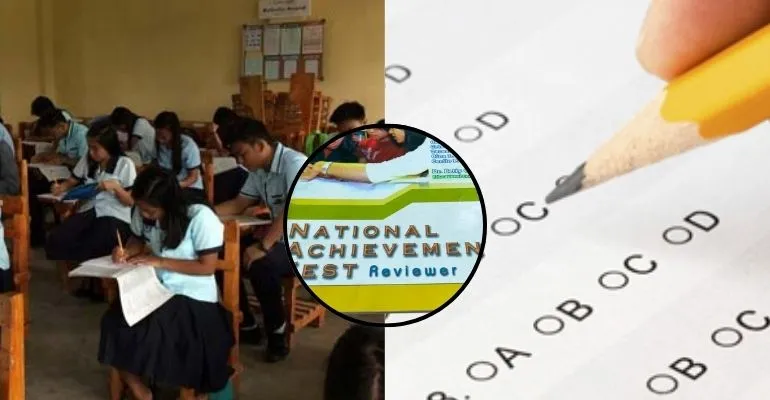The National Achievement Test (NAT) is a standardized set of examinations taken in the Philippines by students in Grades 3, 6, 10 and 12. The test is designed to determine their academic levels, strengths and weaknesses, as well as their knowledge learnt in major subjects during the academic year. We compiled a downloadable NAT Reviewers with Answer Keys (2024) for you in pdf.
Disclaimer: WhatAlife does not make any warranties about the completeness, reliability and accuracy of these reviewers. Any action you take upon the information you find on this website is strictly at your own risk.
What’s Inside the NAT Reviewer?
The free NAT Grade 10 Reviewer covers all the major test subjects – Math, English, Science, Filipino, and Araling Panlipunan. Each section is filled with questions, answers, and thorough explanations.
Mathematics
English
Science
Araling Panlipunan
Filipino
Test Administration Guidelines
Information Dissemination
To Examinees:
- Inform the examinees to bring pencils (lead#2) on exam day.
- Inform the fourth year students taking NAT to bring snacks/lunch on exam day. They are not allowed to leave the campus.
- Inform the examinees that they should know the curriculum / program they belong to (BEC, ESEP/STEM, TVE, SPA and OHSP)
- Inform the examinees to have a copy of their ratings in the third grading period: Math, English, Science, Filipino and
- HeKaSi/Araling Panlipunan.
- Advise the examinees to have a copy of their LRN.
- The coverage of NAT Y4 includes the core subjects and the Critical Thinking Skills Test.
- Only the Grade 6 examinees are issued with individual CORs. Hence, their ASs are provided with Examinee Stubs.
To Schools:
- The list of examinees must be alphabetically arranged in the whole school. All males first then females.
- Each listed examinee should have his/her corresponding LRN.
- Inclusion Policies
- Examinees with Hearing Impairment (HI) may take the test and may be included in the regular testing room
- Only those Y4 students graduating in March 2015 will be allowed to take the NAT Y4
- Non-testing officials are not allowed to stay in the vicinity of the testing rooms.
Preparation of Classrooms
- Well lighted and conducive for testing.
- For Grade 6 and Year 4, 30 armchairs should be provided.
- The arrangement of the seats must be well-spaced & spread out; first and last rows are close to the walls.
Test Proper
- Read verbatim the information in boxed portions of the handbook. Do NOT translate in the local language/dialect.
- Always record the time started and the time when clustered subject tests will end.
- Do NOT add nor subtract minutes in the time allocated.
- Accomplish the Seat Plan while the examinees are answering the EDQ.
- Accomplish Form 7 while the test is in progress.
- Closely supervise the examinees in accomplishing the AS so that reliable data can be generated.
Other Concerns
Utilization of the Certificate of Ratings (COR)
The utilization of the COR is stipulated in the following issuances:
- DepED Memo NO. 228, s. 2007
- DepED Memo No. 278, s. 2010
Practices in Some Divisions Relative to the Utilization of the COR
- Attach the COR in the Form 137 in Grade 6 as part of the student’s credentials prior to enrolment.
- The COR is photocopied. One copy is for the school where the student intends to enroll while the original COR is given to him/her.
Refusal of State Univ./Colleges (SUCs) to Take National Exams
- Send a communication to NETRC regarding SUCs that refuse to be administered national exams (NCAE, NAT, etc.).
- The communication will be endorsed to the Secretary of Education.
Good Practices as Reflected in a School Culture
Region/Division Codes and School ID
- Posting permanently in every classroom (near the chalkboards) the information on the Region and Division Codes and the School ID
Learner Reference Number
- The LRN is used by the examinee in any form of school and classroom-based assessments. This practice may be adopted not only during national examinations.
Keep Reading: LET Reviewer with Answer Keys (2024)



Leave a Reply